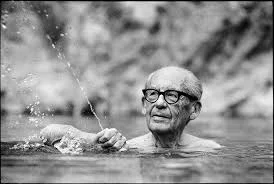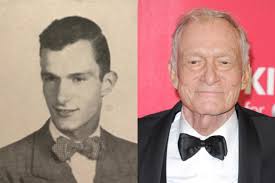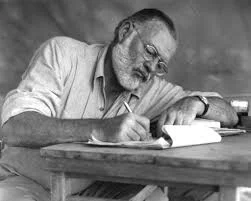The Haus That Walter Gropius Built. How Brauhaus Has Subtly Changed Our Lives.
It's just on one hundred years ago that architect Walter Gropius had a vision spurred him on into transforming a cloistered German art school into arguably the most influential modern design academy in history. At the height of its success, the school had three “campuses’ based in Weimer, Dessau and Berlin.
Built on utopian principles, the Bauhaus sounded like a creative wonderland which encouraged every art form from Printing, Carpentry, Dance, Ceramics, Painting and architecture.
The incredible Bauhaus bubble lasted for a brief 14 years, but its legacy and influence reverberates in just about every aspect of modern life today. The inspiration has lingered on long after it’s “death” in 1933 The Brauhaus DNA has permeated current designs in minimalist home furniture, the inspiration or the shapes of tech products, , boxy and unusual architectural structures all over the world and even whimsical Halloween costumes
A century after its founding, you might ask, why do we still bow to the Bauhaus?
The Bauhaus, literally means, “school of building” and was established as a German avant-garde arts and crafts academy. It had its humble beginnings just six months after the end of World War I where the school encouraged artists and designers to use their talents to help rebuild the broken society.
At that time Germany was in ruins and many thought it was time to start from scratch. The Bauhaus logo, a triangle, a square, and a circle evoked this back-to-basics mentality. From its inception, the school challenged everything, including the usual method of schooling.
Gropius borrowed the idea of Gesamtkunstwerk, or “synthesis of the arts,” from composer Richard Wagner, whereby the institution would “unite every discipline from architecture and sculpture to the discipline of painting.
Under the guiding hand of Gropius students of the school were encouraged to leave “sentimental and aesthetically decorative conceptions” behind as they symbolized relics of past cultures. What this meant was doing away with decorative crafts built up over centuries. He introduced a new school of thought that studied the ‘nature and origin of things’ and to begin designing from those fundamental basics.
A hundred years on, one can easily traceback Brauhaus thinking and ‘ simple design’ to the development of the iPod and the brilliantly simple creation of the i Phone. Steve Jobs made reference to this when he addressed the International Design Conference at the Aspen Design Institute, which itself is has aligned itself to the Brauhaus School of thinking.
With the rise of the Nazis regime the school came under intense pressure as the ruling party believed the school’s rejection of traditional aesthetics was a slight on Germanic pride. The Bauhaus was driven from Weimar to Dessau, then finally to Berlin, where The Nazi Party shut down the school in 1933. This forced exit, however, had a surprising outcome in that the influences and teachings began to spread until it gained worldwide recognition.
One of the founding principles of Brauhaus were the concepts of designing and implementing products for mass production. Its core ‘brand’ and corresponding slogan, “Art into Industry,” its workshops began to produce handsome, steel-frame chairs, cutting edge kitchenware, and textiles.
What made Bauhaus design survive and thrive was their philosophy. Students were encouraged to make their designs ‘portable’ and so even with the Nazi crackdown, outposts began to pop up in the UK, Switzerland, Israel, Mexico, Chile, Colombia, the US as well as other outlets around the globe.
Walter Gropius fled Germany and took up a position at Harvard University where he continued his work. An exhibition at the renowned MoMA suddenly elevated the Bauhaus to mythic status. Other Brauhaus devotees had similar success like one of the directors, Ludwig Mies van der Rohe who was lured to the Illinois Institute of Technology in Chicago, where his plan for the campus has become a modernist icon.
Another Bauhaus-trained artist, László Moholy-Nagy founded the School of Design in Chicago, which was eventually absorbed into IIT. One of the philanthropic supporters of this dynamic school was fellow Chicagoan Hugh Hefner who was an enthusiastic popularizer of modernistic design.
Bauhaus design perhaps came into its own after the conclusion of World War 2 when manufacturing became a powerhouse in the rebuilding cities and shattered lives. Cars, refrigerators, pop up toasters, TVs, and house designs adopted the Brauhaus design philosophy with gusto, churning out chrome and steel delights. The war had revolutionized assembly-line manufacturing and the Bauhaus style was there waiting to turn this new industrial revolution into an artistic impulse for a middle class that was on the cusp of exploding.
The Modernist artist, Michael-Craig Martin, in an interview with the Guardian, said of Brauhaus philosophy and its ability to operate ‘outside the box’ was probably the inspiration behind the powerhouse brand IKEA.
Brauhaus thinking is as alive today as it was in the early 1920s Their ideas can be seen in modern industrial design, logos, architecture and graphic art. Corporations have slavishly followed Bauhaus’s original thinking by making a clean break with tradition, allowing their businesses to crossed borders to encompass international economies.
The Brauhaus has stealthily crept into our everyday lives without most of us even realizing it!
A’int that grand!















